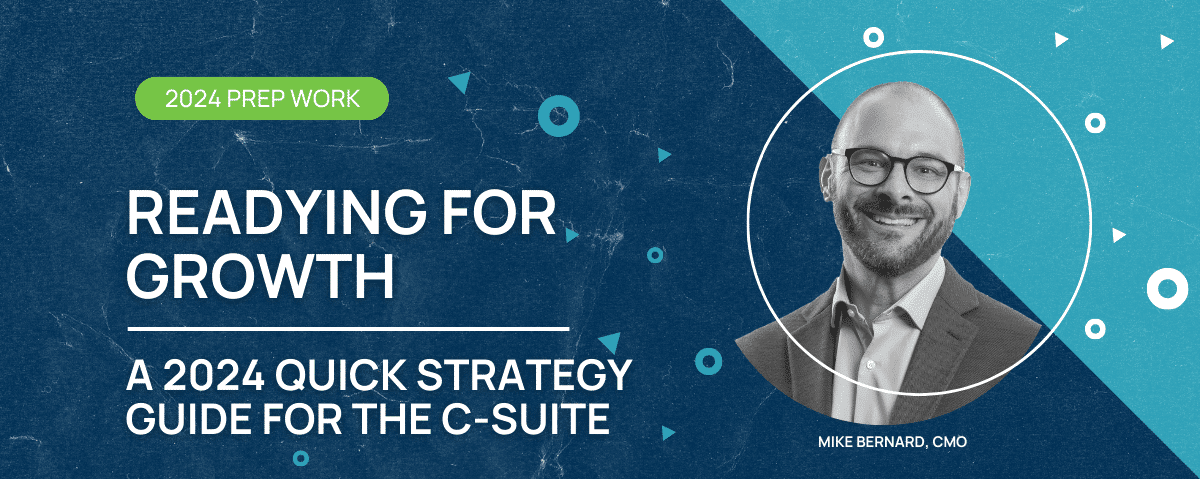
Inflation may still be higher than we’d like, but 2024 is looking bright. And there’s a lot that organizations can do to prepare for the future. In this quick guide for decision-makers, Mike Bernard, Chief Marketing Officer at Vendavo, covers some easy strategies to help your team fine-tune your business processes and get ready for a new year of growth and profitability.
A brighter 2024 could be on the way despite higher inflation rates than most would like to see. Many economists are cautiously optimistic that the Federal Reserve will opt for a soft landing to avoid a recession, so fingers crossed.
In this kind of environment, manufacturers will likely want to shift their focus toward preparing for future growth and reallocating their budgets. The trick is to fine-tune your business processes now so you can jump into action when the time is right.
Here are a few strategies to help you maximize profitability in 2024.
Out with price hikes, in with price improvement
Customers tolerated price increases when inflation was sky-high following 2020, and those hikes fueled growth for many organizations. With lower inflation forecast for 2024, though, the window has closed for large, across-the-board price increases.
Manufacturers will want to avoid raising prices across the board or risk seeming disconnected from even their most loyal customers. Strategic price improvements that are carefully planned will be the better route, enhancing overall profitability while maintaining customer satisfaction and competitiveness.

While counterintuitive, price improvement has a greater positive impact on the bottom line than cost-cutting.”
Mitch Lee, Profit Evangelist at Vendavo
Avoid price cutting
Blanket price increases won’t go over well in 2024, but neither will aggressive price cuts. While lowering prices may make your sales team happy and win more deals, it may have the opposite impact on profits. Price cuts mean margins drop, overall profitability can go down, and decision-makers will want answers. Instead of hasty, across-the-board price cuts, figure out what each customer is willing to pay for your products and charge accordingly.
Adapt to changing preferences and trends
A value-based pricing strategy is a great option if you’re looking to boost profits with price improvements in 2024, according to the Pricing Excellence Report and 2024 Outlook. This approach is based on what customers are willing to pay, and helps create better pricing strategies that are focused on actual market conditions, make better pricing decisions, and simplify processes. It ensures you’re meeting customer expectations without missing out on potential revenue.
- Start with segmentation
Segmentation involves dividing your customer base into groups based on shared characteristics, behaviors, or demographics. This helps determine their needs and expectations, which impacts their willingness to pay.
- Determine willingness to pay
Understanding customers’ willingness to pay (WTP) is crucial for setting the right prices and increasing revenue. Pricing that aligns well with customer preferences also contributes to a better overall customer experience. WTP is the maximum amount customers are willing to spend on your product, and is determined by factors like budget, market alternatives, and overall satisfaction with your offerings. You can calculate WTP by analyzing historical data, customer details, and product attributes.
- Understand what customers would be willing to pay tomorrow
If a customer pays $10 for your widget today, they might actually be willing to pay $15 for that same widget next time because they value the product, its features, and your partnership. You find this by segmenting by customer types, geography, industry, and other factors, then comparing historical transaction data for invaluable insights. If beer drinkers in the Northeast pay $20 for a 12-pack of your finest brand, for example, and those in the Southeast have been paying $22 for a similar beverage, you may have room for price improvement in the Northeast.
Learn more about the various pricing models and how to select one.
Shift pricing authority to sales and marketing
Agility matters in pricing. In the highly competitive manufacturing landscape, companies are relying more on their sales and marketing teams to achieve revenue goals with greater precision. The 2024 Pricing Excellence Report reveals that 56 percent of organizations have delegated pricing authority for quicker adjustments that align with customer expectations. Providing consistent, competitive, and easily understood prices that match what customers are willing to pay contributes to customer experience.
Optimize for quick, efficient sales
Shorter sales cycles lead to quicker revenue, and a more efficient sales process increases your chances of winning deals. Sales cycles often get elongated by the configuring and quoting process, particularly for large, complex products. Streamline this by using configure, price, quote technology, automating the process, and ensuring consistent adherence to pricing and profitability metrics.

Armed with detailed insights on willingness to pay and the gaps of what people pay today vs. what they may pay in the future, you can create a list of targeted opportunities for the sales team. Trust me, there is nothing they would love more!”
Dan Cakora, Business Consultant at Vendavo
Limit revenue leakage with a rebate program
Successful rebate programs contribute to revenue growth, attract buyers, and strengthen long-term relationships to prepare for better economic times. They have the potential to increase sales by 2% to 10%, but challenges arise when customers commit to buying at a low price and don’t follow through. To address this, you need to structure rebates based on purchases rather than promises. This will turn incentive programs into effective tools for steering desired buyer behavior and increasing profitability.
Check out how Genpak implemented a rebate program and is now reaping the benefits.
Put your data to work with strategic AI implementation
In 2024, more organizations are expected to use AI to make better use of their data. According to the Pricing Excellence Report, 51 percent of organizations either already use AI for price optimization or plan to implement it within the next year. AI can help sales teams identify opportunities for cross-selling and upselling, improve forecasting accuracy, analyze data more quickly, identify patterns in diverse data sets, create personalized discounts or bundles, and keep an eye on competitors pricing.

Data really is king and continuing in 2024, it’s the key to achieving business growth. From competitive insights to your customer’s willingness to pay thresholds, and timely insights for sales, what you know, when (and why) will make all the difference”
Dayton Kellenberger, CFO at Vendavo
How Vendavo can help
Vendavo partners with the world’s leading companies to accelerate growth and profitability, advance innovation, and build more prosperous communities. Our cloud-based, AI-powered pricing, selling, and prescribing solutions help global manufacturers and distributors to manage, optimize, and digitize their end-to-end commercial processes.
But we offer so much more than software. We are passionate about helping our customers deliver the right products, at the right prices, at the right time, for the right people. Reach out today to set up a demo of our products or speak with an expert.
